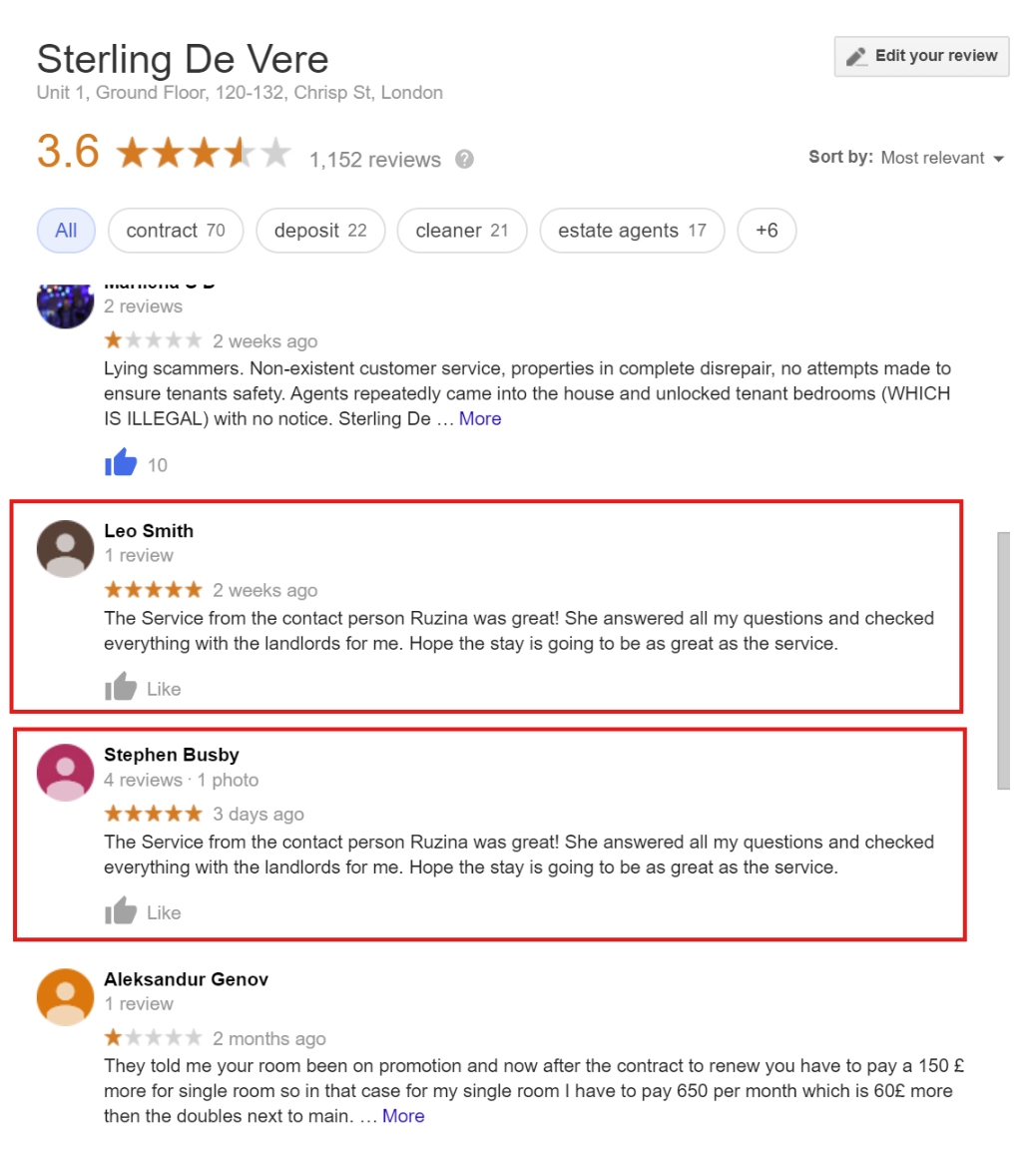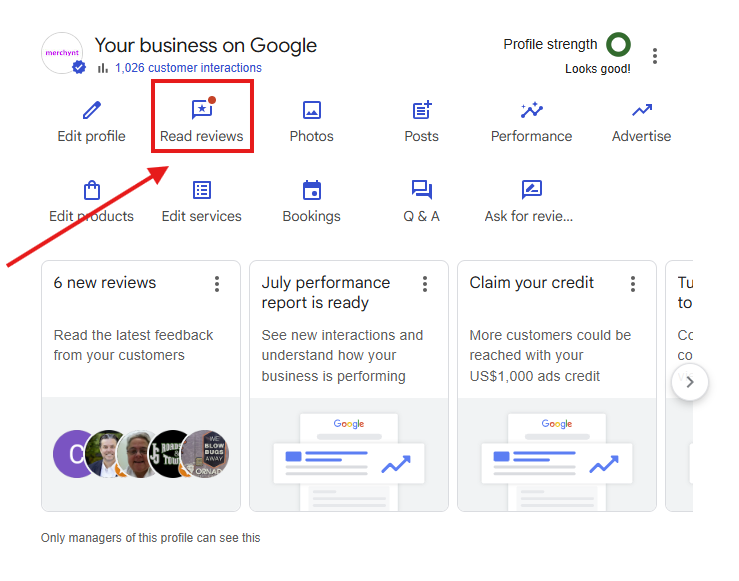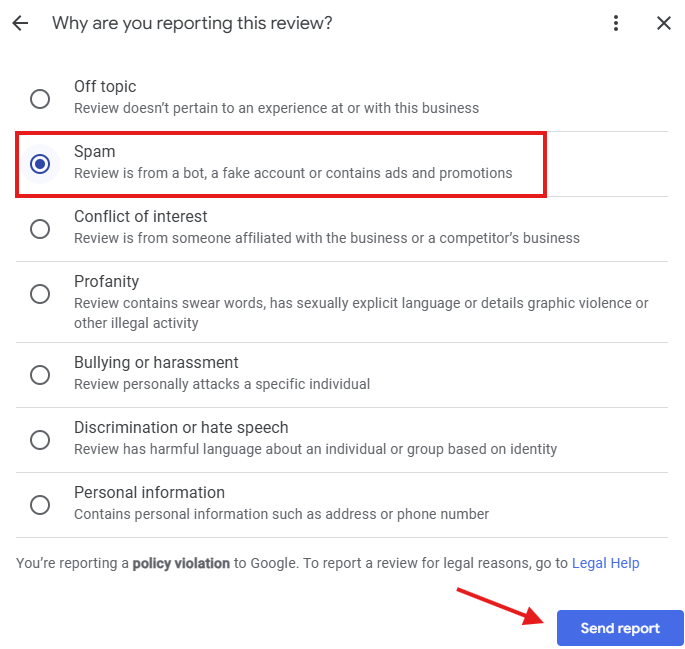
Imagine you’ve done everything you can to get good reviews, you’ve shared QR links, actively followed up with customers to get them to review your brand, and all seems to be going well as far as you can tell. Then suddenly you get fake negative reviews planted on your Google Business profile (formerly Google My Business) and it tanks your ratings.
Or imagine going to a restaurant with a lot of positive reviews, and you get there to experience the worst service ever. It dawns on you that maybe the reviews you saw about the restaurant weren’t true, but rather were fake positive reviews. Whether the review is positive or negative, as long as it is fake, Google frowns at it and can even penalize you for doing so. Fake reviews can be difficult to detect; however, this guide can help you learn what to look for and provide guidance on how to report them.
What is A Fake Google Review?
A fake review is any content “not based on a real experience” or posted because of an incentive, posted from multiple accounts, or intended to mislead users about a place or product.
Common examples of fake Google reviews are:
- Reviews written by the business owner, employees, friends, or family.
- Paid or discounted reviews, or reviews left in exchange for resolving a negative review.
- Coordinated 1-star attacks on competitors or bulk 5-star boosts.
Signs a Google Review Is Fake
- Check if the review was copied and pasted:
If you see multiple reviews posted by different reviewers that were copied and pasted word for word, that’s a tell-tale sign that the review is botched. Duplicate phrasing suggests spam networks.

2. Check the reviewer’s profile:
If the reviewer has only about 1 - 2 lifetime reviews or reviews scattered across cities within hours, this might point to the fact that it's a scam or competitor.
3. No context, or mention of a staff or product:
This is a gray area, as sometimes actual customers might just drop only reviews, but most genuine customers will share at least one detail about the product or service they received from you. it’s also a reminder that you should encourage customers to be as concrete as they can and as detailed as they can in their reviews.
4. Check if the review references competitors or unrelated products: if you see a review like “Bad service, Apple Bess is better” more often than not, it's a paid reviewer who was paid to write dirt and point potential customers reading these reviews to another product or service provider.
5. Pay attention to how the review is written: Some reviews showcase extreme generic language with no specifics. For example, “Worst place”, “Best Place’ no context or specifics
How Google Handles Fake Reviews
Google uses a sophisticated AI-powered detection system to tackle fake reviews. This system looks for key signals like:
1. Similar writing styles
Google’s filters use natural language processing (NLP) and machine learning to analyze the text of reviews. If multiple reviews use the same phrases, tone, or sentence structure, or overuse emojis, exclamation points, it may suggest they were written by the same person or generated by bots.
2. A sudden influx of reviews on the same business profile, and more.
An unnatural spike in review activity, especially if it's all positive or all negative, can indicate review manipulation. If the pattern looks suspicious (e.g., 20 new reviews overnight after weeks of silence), the filter may temporarily hide or block those reviews for further review.
3. User proximity to the business they are reviewing:
Google uses location data (via GPS or IP address) to determine whether a reviewer has been physically near the business they are reviewing. If someone leaves a review from a location thousands of miles away, without ever having visited the area, it may trigger a flag. Example: A reviewer based in India who leaves 1-star reviews on dozens of U.S. restaurants they’ve never visited could have their reviews removed.
4. Whether they have recently visited the place:
For users with Location History or Google Maps enabled, Google knows if someone recently visited a business.
- If a review is submitted shortly after a confirmed visit, it’s more likely to be considered legitimate.
- If no visit data exists (and the user claims very specific experiences), it may raise credibility issues.
Example: Someone leaves a detailed complaint about a service they supposedly experienced last night, but their device never came within 50 miles of the business. That’s suspicious.
5. If the reviews come from the same Wi-Fi network:
Google can detect if multiple Google accounts are being used from the same internet connection or device to post reviews.
- If 10 accounts all review the same business in a short window from the same IP, it strongly suggests review stuffing.
- This is a common tactic for businesses posting fake positive reviews or competitors posting negative ones.
Penalties For Fake Reviews
- There are some key actions that Google can take when it notices fake reviews. These are:
Immediate removal of violating reviews. - Google may also freeze new reviews, unpublish existing ones, or add a warning banner if fake-review activity is detected.
Reporting & Appealing a Suspected Fake Review
Here’s a step-by-step process to report fake reviews
1. Step 1: Open the Reviews Management Tool in Business Profile Manager.

2. Step 2: Locate the review ➜ Report ➜ choose the violation category, and finally send the report to Google.


Best Practices to Protect Your Listing
Here are the four best practices to protect your GBP from fake reviews:
1. Monitor your reviews daily:
Check your reviews daily and monitor them for any abnormalities. You can use a tool like Paige, which also helps to automatically flag fake reviews on Google.
2. Respond to all reviews:
Make sure to respond professionally to all reviews, whether fake or real. This shows other potential customers watching your Google Business Profile that you care.
3. Educate your staff and team members:
Educate your team on the importance of genuine reviews as well as giving great service. Great service sells itself. As a rule of thumb, never, never offer incentives for positive feedback, and document customer interactions to refute fake claims.
4. Keep your records:
Sometimes, showing the records is all you need to defeat a fake reviewer on Google. Keep all receipts and messages as a source of evidence.
Final Thoughts
So, can Google detect fake reviews? Absolutely. But as a business owner, you also play a huge role in identifying and flagging false activity. Staying vigilant, responding professionally, and maintaining a steady flow of real, positive reviews is the best defense against fake ones.
Want help spotting fake reviews on your Google Business Profile? Try our free local SEO audit tool to uncover review issues and see how they affect your rankings.
Enjoyed this post? Check out more like it
What Is Review Management, And How Can Businesses Do It Effectively?
About Author

